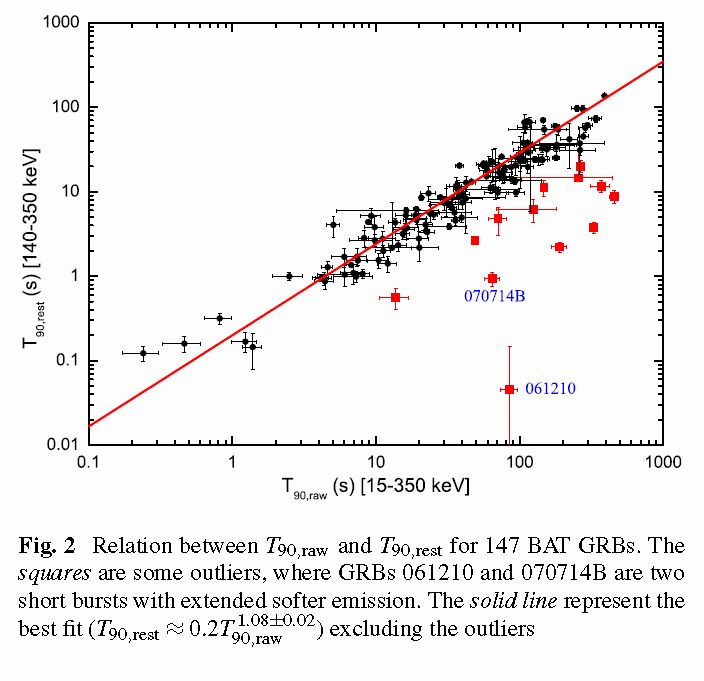In this work we perform a statistical analysis of the intrinsic properties (T90,rest, Ep,rest, Eiso and Liso) and their redshift dependence of long GRBs mainly observed by Swift/BAT. For comparison, the GRBs with known redshift and well measured spectrum detected by other instruments are also included in our analysis.
We find that the dependence of the peak luminosity and the isotropic energy on redshift are different. Actually, the isotropic energy of a high redshift GRB is only a lower limit due to the “tip-of-iceberg” effect.

By with FAN Y.Z.
We performed a statistical analysis of the intrinsic properties and their redshift dependence of long gamma-ray bursts (GRBs) mainly detected by Swift satellite. The intrinsic quantities are the (z- and K-corrected) rest-frame duration, T (90,rest), the rest-frame peak energy, E (p,rest), the isotropic equivalent energy, E (iso), and the peak isotropic luminosity, L (iso), of the prompt emission. We find that the distributions of T (90,rest), E (p,rest), E (iso) and L (iso) all span a wide range and their central values are T (90,rest)similar to 10 s, E (p,rest)similar to 500 keV, E (iso)similar to 10(53) erg and L (iso similar to)3x10(52) erg/s. We also show that E (p,rest) and L (iso) are independent with T (90,rest), but E (iso) is correlated with T (90,rest). Moreover, we find the observed peak energy is independent with redshift, but the intrinsic peak energy, the isotropic energy and the peak luminosity all show some dependence on redshift, where the truncation effect is taken into account.
The work by F.-W. Zhang ,Y.-Z. Fan , D.-M. Wei has been published in ASTROPHYSICS AND SPACE SCIENCE. Volume: 350 Issue: 2 Pages: 691-699 http://link.springer.com/article/10.1007%2Fs10509-014-1780-7
